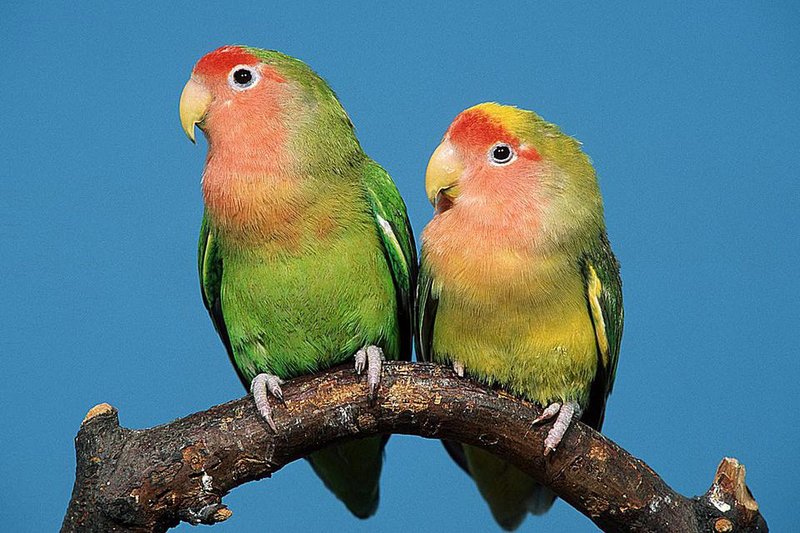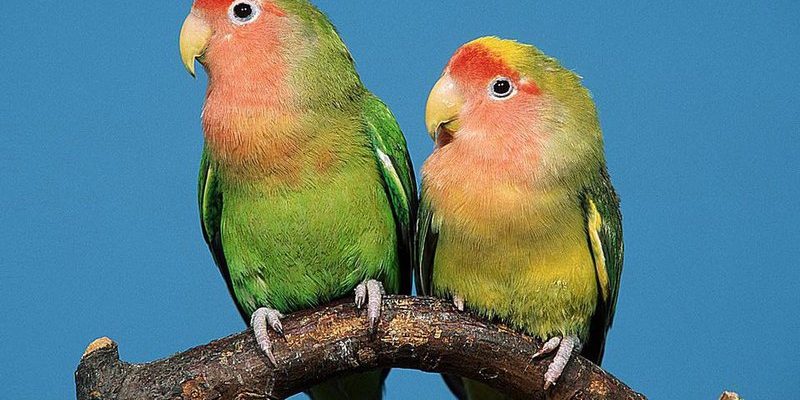
Across continents, lovebirds inspire countless stories and legends. Their vibrant colors and sweet social behaviors make them irresistible to observe, and it’s no surprise that cultures have woven them into their fabric of beliefs and practices. In this article, let me take you on a journey to explore the rich cultural significance of lovebirds. We’ll dive into folktales, symbolism, and how these delightful creatures continue to touch lives today.
Symbolism of Love in Different Cultures
Lovebirds are often viewed as a symbol of romantic love. In many cultures, these vibrant little parrots represent deep emotional connections and fidelity between partners. In fact, their name, “lovebird,” comes from their affectionate nature and tendency to form strong, monogamous bonds. You might be wondering how such small creatures can embody something so profound, but it’s all about their behaviors. Lovebirds are known to engage in various social activities, such as grooming each other and cuddling, which makes them a perfect metaphor for love.
In Chinese culture, the lovebird is often associated with good fortune and harmony in relationships. The presence of lovebirds in a home is said to invite love and happiness. For those seeking a partner, hanging lovebird paintings or décor can be a delightful way to attract romance. This belief showcases how lovebirds go beyond being mere pets; they become symbols of hope and joy in interpersonal relationships.
In Western cultures, particularly during the Valentine’s season, lovebirds appear in cards, decorations, and various merchandise as a sign of love and affection. Their imagery captures the essence of romance, making them a favorite motif for gifts between couples. Here’s the thing: lovebirds remind us of the beauty found in companionship, and that’s a universal theme that resonates no matter where you are in the world.
Folklore and Legends Featuring Lovebirds
Across many cultures, lovebirds appear in various folktales and legends that reflect societal values and ideals. One particularly captivating story comes from ancient Egypt, where lovebirds were often associated with the goddess Hathor, the deity of love and joy. This connection emphasized the belief that lovebirds embodied divine love and happiness. It’s fascinating to think about how a single species can carry so much weight in the stories of a civilization!
In South African folklore, lovebirds take on a much deeper meaning. They are often considered messengers of love and peace. According to a popular story, if a lovebird appears in your dreams, it’s an indication that true love is on its way. This belief shows how lovebirds not only symbolize love but also evoke hope and positive energy in the quest for connection.
Moreover, in certain Asian cultures, lovebirds are celebrated during spring festivals as a symbol of new beginnings and renewal. As flowers bloom and the weather warms, lovebirds become a part of the festivities, reminding everyone to cherish the relationships in their lives. Just as spring brings new growth, lovebirds act as a reminder of the potential for love and connection.
The Use of Lovebirds in Art and Literature
Art and literature have long been influenced by the beauty and symbolism of lovebirds. In many paintings, these charming birds are depicted as part of romantic scenes, often surrounded by flowers or in the company of couples. This not only highlights their role as a symbol of love but also captures their vibrant beauty, which speaks to the imagination.
Poets and writers have also found inspiration in lovebirds. From Sonnet to free verse, their affectionate behaviors serve as a metaphor for the complexities of love. One might read a line about lovebirds nestled together and feel a flutter of recognition in their heart. There’s something both comforting and exhilarating in knowing that these tiny creatures have sparked such profound thoughts throughout history.
In modern literature, lovebirds often appear in stories ranging from children’s books to adult novels, where they symbolize loyalty, love, and friendship. By incorporating lovebirds into narratives, authors can convey the importance of these values in a relatable way. Just imagine a scene where a lovebird brings a couple together—it’s a delightful reminder of how love has the power to bridge divides.
Lovebirds in Local Customs and Traditions
In many communities, lovebirds are included in local customs and celebrations, often as tokens of affection or good fortune. For instance, in certain parts of India, lovebirds are released during weddings to symbolize the couple’s hopes for a harmonious and loving marriage. This act captures the essence of love and the desire for lasting companionship, creating a beautiful visual representation of the couple’s commitment to each other.
In some African cultures, lovebirds are considered vital symbols during coming-of-age ceremonies. Young adults are often gifted lovebirds as they transition into adulthood, representing their readiness to enter the world of love and create meaningful relationships. It’s fascinating how an animal can embody such significant milestones in life, isn’t it?
Additionally, many communities have special festivals dedicated to love and companionship, where lovebirds play a central role. These celebrations may include dances, music, and art that honor love in all its forms. When you think about it, these gatherings foster connection and unity, reminding everyone that lovebirds are more than just charming pets—they are symbols of our shared experiences.
The Modern Appreciation of Lovebirds
Today, lovebirds are cherished not only as pets but also as symbols of love in everyday life. With their colorful plumage and playful nature, they bring joy to many households. As more people recognize the emotional comfort that comes from keeping lovebirds, they’ve established a special place in contemporary culture.
Social media has played a role in amplifying this appreciation. You might find photos and stories of lovebirds shared widely, showcasing their endearing antics and the bonds they create with their owners. This digital visibility has helped spread awareness about lovebirds and their symbolic meanings, reinforcing their presence as reminders of love in various forms.
Moreover, as people become more interested in animal welfare, many are drawn to adopting lovebirds from shelters and rescues. This shift shows a growing understanding of their emotional needs and the responsibility involved in caring for a pet. Lovebird enthusiasts often share tips and experiences, fostering a community that values love in its many manifestations.
As we’ve explored, lovebirds hold a special place in cultures and folklore around the world. Their vibrant colors and affectionate behaviors make them perfect symbols of love, loyalty, and companionship. Whether appearing in ancient stories, modern literature, or local traditions, these little birds remind us of the joys and complexities of love.
Understanding the role of lovebirds in various cultures highlights our universal desire for connection and emotional fulfillment. So the next time you see a lovebird—or maybe even hear their sweet chirps—take a moment to appreciate their significance. They’re not just adorable pets; they represent the beautiful tapestry of relationships that enrich our lives. And who knows? You might find yourself inspired to bring a little more love into your own world!

